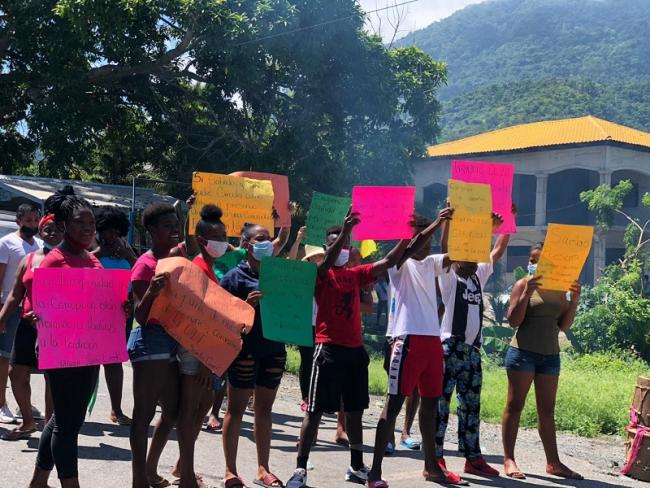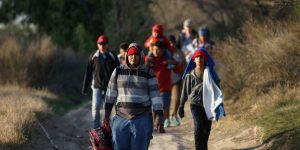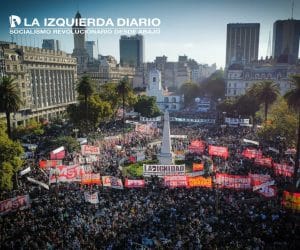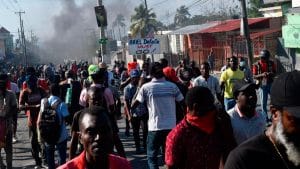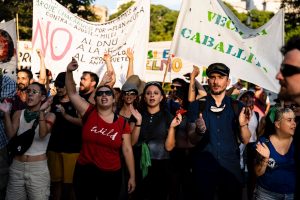“They took them alive; we want them back alive!” The demand reverberates throughout the streets of Honduras, more than a month after the abduction of four land defenders of the Garifuna community in the north of Honduras, Alberth Sneider Centeno, Milton Joel Martínez Álvarez, Suami Aparicio Mejía García and Gerardo Mizael Róchez Cálix , as well as Junior Rafael Juárez Mejía, a neighbor of the community. On July 18, at 5:20 a.m., a group of 12 heavily armed men wearing DPI (Police Investigation Directorate) uniforms entered the Garifuna community of Triunfo de la Cruz. They took the community leaders from their homes and, since that day, the people of Honduras have been demanding answers.
Unfortunately, this is not an isolated incident. Coveted for the development of tourism complexes and the exploitation of natural resources, Garifuna territory has been targeted by state authorities and private companies for decades. Over the years, the Garifuna have waged a heroic struggle in defense of their lands, but recently the violence has accelerated. Since 2015, more than 25 Garifuna land defenders have been murdered and their communities suffer constant attacks. Left Voice spoke with Edgardo Benedit, leader and former president of the Community Board of Triunfo de la Cruz, about the history of the Garifuna people, the violence they have suffered and fought against, and how their struggle continues.
The Garifuna community has been struggling for the defense of its lands for many years now. Can you tell us about the history of that struggle?
The Garifuna people have been dispossessed from the very beginning. Our ancestors were brought here from Africa as enslaved people. The ship used to transport them sunk and they were able to escape. They spent a long time in Jamaica, until they were able to build boats to leave the island and they reached the island of St. Vincent, where they mixed with the indigenous Arawaks. At that time, they believed they had found the blessed land, where they could live quietly and peacefully with their families, but this was not the case. In 1797, the British arrived to take possession of the island and try to subdue the Garifuna people once more. To do this, they destroyed their crops, their cassava and plantain. Finally, there was a battle between Joseph Chatoyer [the Garifuna leader] and John Bennett Baren, who was sent by England to take possession [of the island]. If the English won the battle, they would keep the island and the people would be subdued. Sadly, our leader, Joseph Chatoyer, was assassinated. So the English subdued us, but still the Garifuna people refused to be subjugated and forced into slavery. Since the English were unable to control them, because they resisted, they were sent elsewhere. They were taken away from St. Vincent and arrived in Honduras, specifically in the island of Roatán, which was the first place where the Garifuna settled. We spread out to different areas and now there are 37 Garifuna communities throughout Honduras. Most live on the seashore, because the sea has always been the livelihood of the Garifuna people- the sea, fishing and farming.
In 1821, Honduras would fight against the Spanish to gain its independence. Francisco Morazán [a Honduran military leader who became head of state] asked the Garifuna army to join the fight for independence. If the country became independent, the Garifunas were promised that they and their future generations would be able to live here in Honduras in peace. So [Garifuna leader] Francisco Bulnes, whose name was Walumugu in the Garifuna language, supported Francisco Morazán in his campaign for freedom in 1821. In 1825, when the first Constitution of the Republic of Honduras was written, the Garifuna people were recognized as Hondurans by birth, for having given their lives and having fought for independence.
Now Honduras supposedly guarantees us that. These are constitutional rights. So we acquired titles of full ownership over our lands for collective use by the entire community. Article 346 of the Constitution of the Republic of Honduras states that it is the duty of the state to establish regulations to protect the indigenous and black communities that have settled in the country, so that these peoples can continue to preserve their culture, dances, worldview, spirituality and beliefs. Honduras subsequently signed ILO Convention 169, which required the country to comply with these protective measures. On May 18, 2000, UNESCO itself included the Garifuna culture on its List of the Intangible Cultural Heritage of Humanity.
When did the most recent attempts to take lands from the Garifuna community begin?
That began in the 90s, under the administration of Rafael Leonardo Callejas. For example, in the case of Triunfo de la Cruz, in the municipality of Tela where we live, there are six Garifuna communities settled in this sector. The municipality of Tela extended its urban area to the Garifuna communities without prior and informed consultation, as required by [ILO] Convention 169. Once they extended their urban area, they felt entitled to take our land. The first thing they did was to form a partnership with Honduran and Spanish businessmen from the company Marbella to take land away from our communities. So they issued titles of full ownership over land that belonged to the community, which already had full rights of ownership over its territory.
More than 14 General Assemblies were held in this area, because that could only be approved by the community, and the community did not approve. The people refused, because that area is where we grew our food, where our parents would take us to work the land to produce cassava. The people worked collectively. They had their cooperatives and also sold their products there. They were producers. But because of the pressure that was exerted and the lack of information, some of the community leaders began to be won over. There were some who fought, but some eventually sold out. The authorities began to visit female leaders who worked the land and told them that if they did not sell their land, it would be taken away from them. Then they gave them 700 lempiras in exchange, which was equivalent to about 30 dollars right now. That was what they gave people for all that land. Some people resisted and they suffered the same attacks as when they lived on the island of St. Vincent. They destroyed their cassava plantations. They sent tractors in to destroy them. But God enlightened many young people in the community so they could take up the fight for the defense of our land.
So a claim was filed against the state, against the municipality, and all legal remedies here in Honduras were exhausted. Here the laws don’t work and if they do work, they work in favor of the rich. Since we didn’t find justice in Honduras and we exhausted all legal remedies in our country, the case was brought before the Inter-American Court of Human Rights (IACHR). I was the president of the Community Board (the highest authority regarding community matters) at that time, when we were sadly pushed to seek justice abroad, since we could not find it in our country.
In 2015, the IACHR issued a sentence on the case, declaring that Honduras was violating human rights. The government was asked to remediate the lands, return them to the Garifuna community, first of all, cancel the titles of full ownership that the municipalities had issued and then pay compensation to the people affected. But they haven’t complied with that resolution. It’s been five years since the Inter-American Court issued its resolution in favor of the community of Triunfo de la Cruz and the state has not shown any intention to comply. The people have been demanding that it adhere to the resolution.
What are the interests behind these attempts to take over the land?
The interests are the promotion of tourism. The government sees tourism as an alternative for development. They also want to repeal Article 107 of the Constitution of the Republic of Honduras to allow foreigners to use, sell and own the beaches, which is prohibited by the Constitution. There is also the issue of the African oil palm plantations, which is also affecting us. But I think that more than anything they’re interested in tourism. They want the Garifuna people to leave their lands.
Now, when the Covid-19 pandemic began, the situation of many young people from our community who worked in cities like San Pedro Sula and Tegucigalpa became critical, because their companies closed down, they lost their jobs and had to return to their towns and communities. And in the community, all that we can offer is land, a return to our traditional food production. So the president of the Community Board resolved that these young people would begin to work the land. Since then, the threats against the president of the Community board, Sneider Centeno, who was one of the people abducted, had increased, although threats had been made against him before. At the time, he had tried to file a complaint with the Public Prosecutor’s Office of Tela, but they didn’t even take his statement. So he had to go to Tegucigalpa, to the capital, to the Human Rights Commissioner and the Prosecutor’s Office for National Ethnic Groups, to report that he was being persecuted and threatened.
In recent years, the presidents of Garifuna community boards have faced constant threats. Did you also feel that you were at risk when you were president of the Triunfo de la Cruz Community Board?
Yes, of course. Because it’s been a constant struggle for the defense of our territory. Because there’s a lot of interest on the part of many powerful people to come into Garifuna territory and develop tourism here. We’re not only talking about the government itself, but also about powerful military leaders, businessmen, legislators and many powerful people who want to take over the community’s lands. I was also worried at the time. I had to sleep in different houses. One day I would sleep at my house and the next day, in another house. They came looking for me three times, when I wasn’t sleeping at home.
Has the violence increased since the US-backed coup against Manuel Zelaya in 2009?
It has. It increased after the coup, but in the Garifuna communities it became worse after the [IACHR] resolution issued in 2015. Since then, several leaders have been murdered. For example, Balbo, a member of the community, was killed in [the Garifuna community of] Rio Tinto. The president of the Community Board of [the Garifuna community of] Masca was also murdered. In [the port city of] La Ceiba, some young people from the Garifuna community have also been killed. Three kids in [the neighboring city of] San Pedro Sula were recently captured and disappeared. And in [the municipality of] Santa Rosa de Aguán, the river was contaminated and we don’t know why. Thousands and thousands of fish died. And the river was the livelihood of the Garifuna community here. So in recent years the attacks have been more frequent and systematic against the Garifuna community. They want to make us disappear or scare us so we will flee from our land and they can achieve their goals.
What impact have the most recent events had on the community?
The life of the community has changed. In recent years there has been a complete change, because it’s not the first time that people have been murdered here. And these deaths go unpunished. But now the people are even more worried, because they’ve taken several people from our community and we still haven’t had an answer from the state. The authorities can’t tell us what happened, who took them, where they are. In our community, the children are the ones who have suffered the most. You don’t see children running around on the beach anymore, with the freedom they had before. They play in their homes, in their yards. People are very worried. If they see a car coming, or a person who is not a Garifuna, they run back home.
What does the community think about the government’s response?
There is complete mistrust on the part of the community in that regard. Just seeing a man in uniform is enough to inspire fear and distrust. People definitely feel that it’s the state itself that’s behind all of this, because the people can’t wrap their heads around what happened on July 18. Because people are not allowed to drive on the road in Honduras on Saturdays and Sundays [due to the pandemic], only state vehicles are allowed on the roads. So how is it possible that those people were able to enter the town and take them away on a day that only government vehicles are allowed on the road, and that they’re still missing? How can the state be completely unable to tell the people what happened? So people are distrustful.
But it’s not only the Honduran government that’s complicit. It’s also the international governments who supported an administration that was not chosen by the Honduran people. That has to be clear. This is a government that came to power by electoral fraud. Honduras could’ve had a better fate. The international organizations engaged in foul play against Honduras and now the country is suffering from a situation that should not have happened. Not only the Garifuna communities in Honduras are suffering from it, but the society in general. There is massive emigration, like we’ve never seen before. Caravans have been organized with people fleeing the country, from violence. Our country is governed by maras [criminal organizations]. Just look at where the brother of the president of Honduras [who is in prison in the United States for drug trafficking] is right now. That tells us by whom we’re governed.
How is the struggle continuing?
There are road blocks throughout most of the country, organized by some communities who support us, like the Sambo Creek community. The people of San Pedro Sula, in the Department of Colón, have also been demonstrating. And there have been international protests as well. The Garifuna community in the United States has been demonstrating constantly. The people are ready to fight, the youth are outraged. The pressure will continue and once people can move around freely, the largest demonstration will probably be held in the capital of Honduras. That’s the goal of the Garifuna community, to take over the presidential palace. All the communities are ready to stand up and fight for their rights.
What are you demanding from the state?
We demand that our brothers come back alive. We want them to bring them back alive. That’s the first demand. The other demand is that the state comply with the resolution of the Inter-American Court of Human Rights issued in 2015, which requires that our land be remediated and returned to our communities, so that we can put an end to this situation.
You’ve been fighting for the defense of your community’s lands for many years. At what age did you first become involved with community issues?
At the age of 12. My dad was president of the Standard Fruit Company Workers’ Union. So I had always seen someone in charge, fighting for human rights, for workers’ rights. It wasn’t easy for a Garifuna to be president of the union. It’s not easy at all, but my dad was. And my mom was always a fierce defender of children against child abuse. Later my brother became the first president of the Land Defense Committee, for the defense of the land that we’re fighting for right now, against the Marbella tourism project. And we beat the state. My brother, Víctor Benedit, may he rest in peace, was the first president to form the group to start fighting. When I was very young, he always asked me to draw up the minutes at the meetings. So at a very young age, I already knew what a title of full ownership was. He taught me about the international treaties signed by our country, about the Constitution of the Republic of Honduras and the law, about my rights and also my duties to society.
I became president of the Community Board at the age of 25. Many people thought I wasn’t ready to be president, because I was so young. But I had a lot of knowledge. I was also deputy director of the community radio here and worked as a correspondent for Radio Progreso.
Now I’m a sailor. I spend a lot of time at sea. I work for a shipping company. But when I’m here, I get involved in social issues. Right now I’m carrying out a project called Copa Numada. It’s a friendship cup for children between the ages of 11 and 14, a youth rescue project. In the last four years, it’s become the largest project in Central America among the Garifuna communities. Thirty-eight teams take part nationwide. It hasn’t been easy, because of the economic situation. We’ve even gone to the National Congress to submit the project three times and they’ve never given us funding to do it. We’ve had to do it with the support of the people of the community. Today it’s no longer my dream. Now it’s every kid’s dream, because they all want to play at the Copa Numada. We have 38 teams working hard to qualify for the final, which is covered by the press, reporters, commentators and international television networks. It’s a spectacular event, and for a child it’s a dream come true. We’re looking to build partnerships with people who want to sponsor the event and who would like to be part of this project aimed at rescuing the youth in our community. The goal is to rescue children from things like drugs and alcohol, and from the bad things in our country today, like gangs and criminal organizations . . . I wouldn’t want to see my community go down that road.
What drives you to keep fighting?
First of all, what drives me is my love for my community, my love for my people. And apart from that, this is the land where my children are, where my family is, where my people are, where I was born, where I used to run, where I had my greatest experiences as a child. And without a doubt, you feel that commitment to keep fighting for that land, so that tomorrow, when God takes me from this world, there will be a place that my children can also enjoy, and my grandchildren. So I feel a moral responsibility to fight.
What are your hopes for the future?
My hope for the future is to see a better Honduras. My hope is that, in the next elections, new people who love Honduras will be chosen, people who don’t discriminate based on race, political affiliation, worldview or spirituality. That we will all appreciate human beings for who they are. That people will have respect for the right to live. And that they will instill ethical and moral values that dignify the existence of human beings on this Earth.


